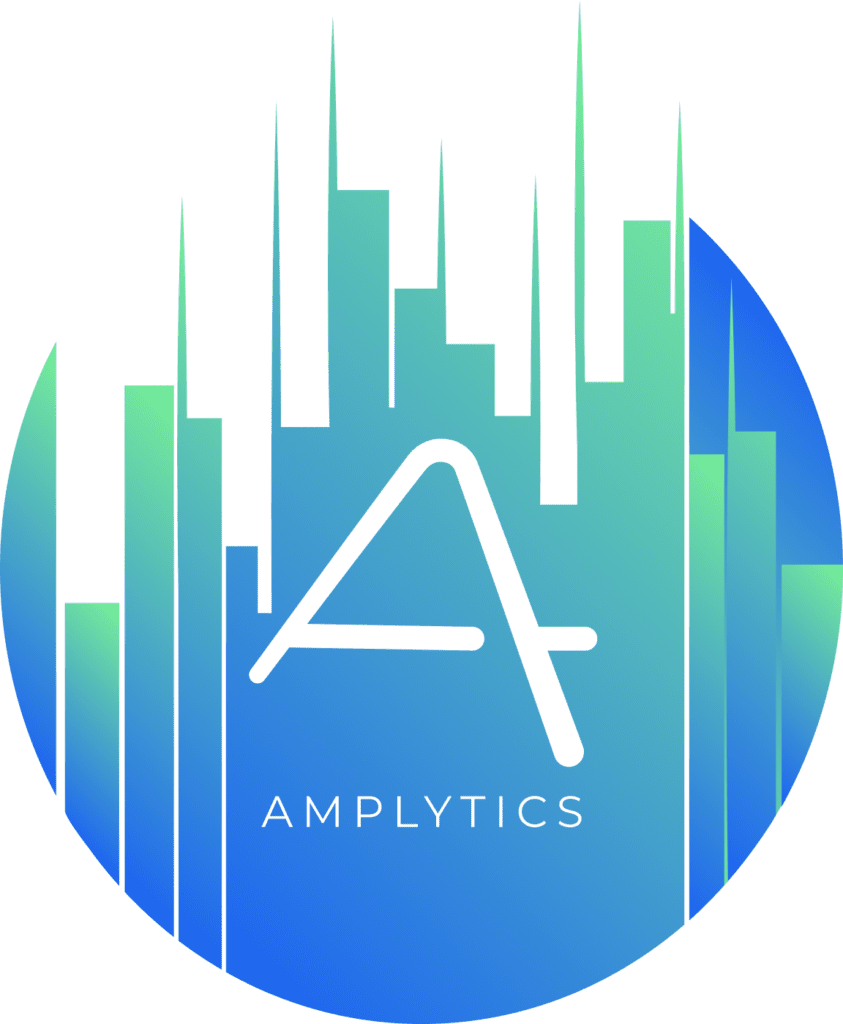What is the Benefit of a Single Image Ad on LinkedIn?
Harnessing the power of LinkedIn’s advertising platform is a strategic move for digital marketers targeting a professional audience. A LinkedIn single image ad campaign is an especially effective way to go about it, and one that offers several key advantages:
- Targeted Professional Audience: LinkedIn is a platform where professionals actively engage in industry-related content. Single image ads allow you to reach this audience in a context where they are already thinking about business, making it an ideal platform for B2B advertising.
- High Engagement: Visual content tends to engage users more effectively than text-only content. A well-crafted single image ad can capture attention quickly, leading to higher engagement rates.
- Brand Awareness: Single image ads are excellent for increasing brand visibility and awareness. A striking image, coupled with a concise message, leaves a lasting impression on viewers, establishing and reinforcing your brand identity among a professional audience.
- Lead Generation and Conversion: These ads can be optimized for specific business goals, including lead generation and direct conversions. With compelling calls-to-action (CTAs) and linked landing pages, single image ads can effectively drive traffic and conversions.
- Versatility and Simplicity: Single image ads offer a straightforward format that’s versatile enough to accommodate a range of messages and creative styles. This simplicity makes it easier to create and iterate on ads, saving time and resources.
- Trust and Credibility: Advertising on a trusted, respected platform like LinkedIn lends additional credibility to your brand.
In this post, the experts at Amplytics will provide a thorough walkthrough on setting up a LinkedIn single image ad campaign. We’ll discuss everything from critical metrics through the initial steps of creation, best practices, and critical metrics, ensuring your next campaign effectively engages your target audience and provides maximum return on your LinkedIn ad spend.
Understanding LinkedIn Single Image Ad Specs and Sizes
Before diving into any campaign creation process, it’s crucial to understand the requirements for the platform and ad style you’re planning to leverage. Specifications and sizes play a vital role in how your ad is displayed and perceived by your target audience. Note that all data in this section has been pulled directly from the LinkedIn single image ad guide.
What Size Should a LinkedIn Single Image Ad Be?
Follow these specifications to be sure your campaign is as effective as possible:
File Type: jpg, png, or gif
File Size: 5 MB
Horizontal / Landscape
Horizontal images will deliver to both desktop and mobile.
Minimum: 640 x 360 pixels
Maximum: 7680 x 4320 pixels
Recommended: 1.91:1 – 1200 x 628 pixels
Square
LinkedIn recommends this aspect ratio for delivery across both desktop and mobile
Minimum: 360 x 360 pixels
Maximum: 4320 x 4320 pixels
Recommended: 1:1 – 1200 x 1200 pixels
Vertical
LinkedIn recommends this aspect ratio for best performance on CTR on mobile (vertical images do not deliver to desktop.
Minimum: 360 x 640 pixels
Maximum: 2430 x 4320 pixels
Recommended:
1:1.91 – 628 x 1200 pixels
2:3 – 600 x 900 pixels
4:5 – 720 x 900 pixels
What is the Character Limit for LinkedIn Single Image Ad?
Stay within these guidelines to be sure that your ad is displayed properly:
Ad name (optional): 255 characters
Headline: 70 characters
Introductory text: 150 characters
Description (LAN only): 70 characters. Only required if using LinkedIn Audience Network (LAN).
Call To Action
A limited list of calls to action is available for use on LinkedIn single image ad campaigns. Choose from the following:
Apply
Download
View Quote
Learn More
Sign Up
Subscribe
Register
Join
Attend
Request Demo
Do LinkedIn Single Image Ads Run on Mobile as Well?
LinkedIn single image ads run on mobile devices as well as desktops. In fact, more than half of LinkedIn users access the platform through their mobile devices, making mobile optimization a critical aspect of any LinkedIn advertising strategy. Remember that mobile users often scroll faster and have shorter attention spans, so it’s important to create ads that are eye-catching and immediately convey your key message. A combination of high-quality, visually appealing images and concise text works best.
Creating Your LinkedIn Single Image Ad Campaign
Now that you’ve got a clear understanding of the specs and character limits, it’s time to create your ad. Let’s make sure you know how to select the right image, craft ad copy with impact, set up your campaign and reach your target audience.
LinkedIn Single Image Ad Campaign Best Practices
The key to success is a combination of strategic planning, creative execution, and continuous optimization. With careful attention to these elements, your LinkedIn single image ads will effectively reach and engage your target audience, driving meaningful results for your business.
Here are five key tips to help you:
1. Define a Precisely Targeted Audience
The first step in ensuring the success of your LinkedIn campaign is to define and understand your target audience. LinkedIn offers targeting tools that allow you to segment an audience based on various criteria like industry, company size, job title, skills, and even interests. Use these tools to narrow down your audience to those most likely to be interested in your product or service. This focused approach will increase the relevance of your ad and improve the overall return on investment (ROI) of your campaign.
For instance, if your target is marketing professionals, you can further segment by seniority level, specific marketing skills, or the size of the companies they work for. This kind of detailed targeting ensures that your ad reaches the most relevant viewers, increasing the likelihood of engagement and conversion.
2. Craft Compelling and Concise Messaging
Your copy has to be informative and engaging, all while staying within tight character limits. Start with a strong headline that grabs attention and clearly communicates the value proposition of your offering. The supporting text should then succinctly elaborate on the headline, prompting the viewer to take action. Avoid jargon and overly complex language; instead, use clear, simple words that resonate with your target audience.
A/B testing different versions of your ad copy allows you to determine which messages are resonating the most with your audience. Use your insights to refine and optimize campaign performance.
3. Create High-Quality, Relevant Imagery
The image you choose for your ad is arguably the most crucial element. It’s the first thing viewers will notice, and it plays a significant role in capturing their attention. Select high-quality, visually appealing images that are relevant to your message and resonate with your target audience. The image should complement your ad copy and reinforce the message you are trying to convey.
Avoid using generic stock photos. Instead, opt for unique images that stand out in the LinkedIn feed. Images that include people tend to perform better, especially if the subjects in the image reflect your target audience. This helps create a connection with the viewer and can increase the relatability of your ad. Want a cutting-edge, contemporary look? Learn to use DALL-E, Midjourney or another of the latest AI tools.
4. Optimize for Mobile Users
Ensure that your text is legible on smaller screens and that your images are clear and not too cluttered. Mobile users often scroll quickly through their feeds, so your ad needs to be eye-catching enough to make them stop and take notice. When designing your ad, periodically preview it on a mobile device to ensure it looks as intended. Pay attention to how your ad appears in both portrait and landscape orientations, as users may view it in either format.
5. Continuously Monitor and Adjust
Track key performance indicators (KPIs) like click-through rates (CTR), conversion rates, and engagement rates. Adjust your strategy based on this data. If certain aspects of your ad aren’t performing as expected, don’t hesitate to tweak your targeting, ad copy, or imagery. Marketers who use Amplytics for monitoring and alerting always know how their campaigns are doing. Amplytics watches paid LinkedIn ad campaigns nonstop, automatically delivering customized email or Slack updates, so that necessary pivots can happen in a timely fashion.
Set Up Your LinkedIn Single Image Ad Campaign
Setting up a LinkedIn single image ad campaign involves a series of steps, from initial account setup to launching your ad. You’ll need a few things to get started:
- LinkedIn Account: You need a personal LinkedIn account to access LinkedIn’s advertising features.
- LinkedIn Company Page: You should have a LinkedIn Company Page, as ads are run and managed through this page.
- Credit Card or Payment Method: A valid credit card or other acceptable payment method is required to pay for your ad spend.
- Ad Content: Have your ad copy and image approved and ready to go.
Steps to Set Up a LinkedIn Single Image Ad Campaign
1. Access LinkedIn Campaign Manager: Log in to your LinkedIn account and navigate to the LinkedIn Campaign Manager. This is the platform where you will create and manage your ads.
2. Create a New Campaign: In Campaign Manager, select your LinkedIn Company Page. Click on ‘Create Campaign’. Choose an objective for your campaign (e.g., brand awareness, website visits, lead generation).
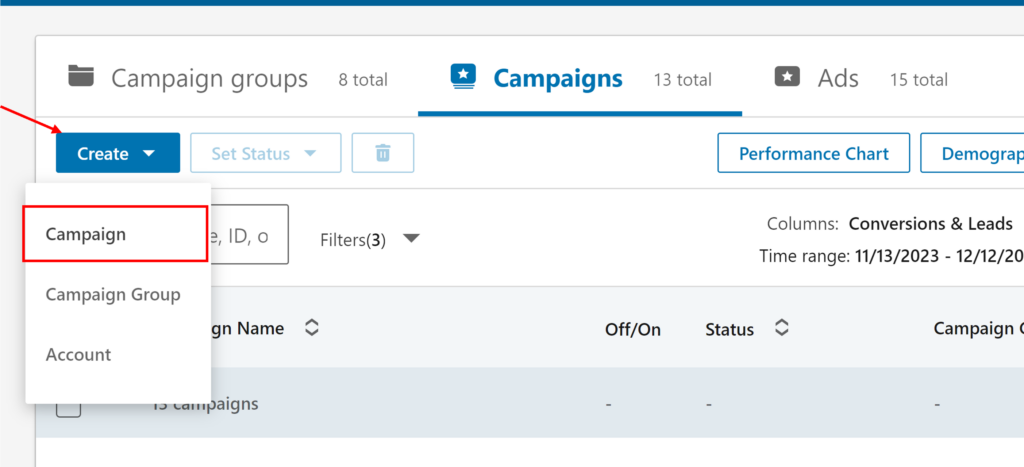
3. Define Your Audience: Use LinkedIn’s targeting options to define your audience. You can target based on demographics, job titles, industries, company size, and more. Be as specific as possible to ensure your ad is shown to the most relevant audience.
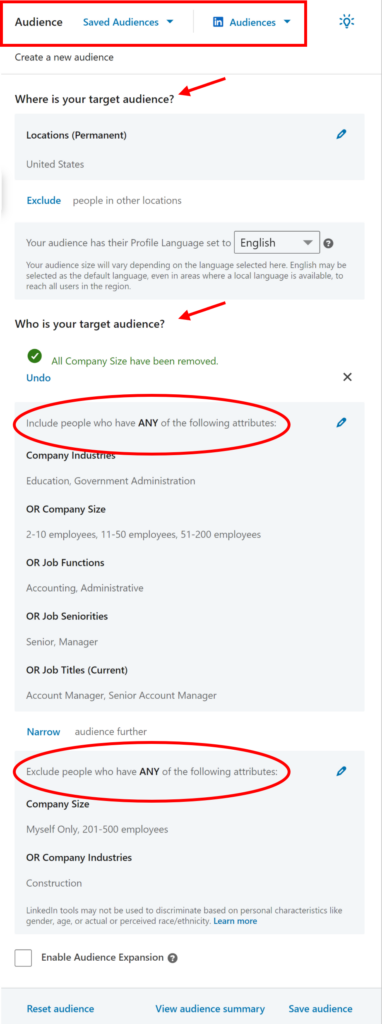
4. Choose Ad Format: Select ‘Single Image Ad’ as your ad format.
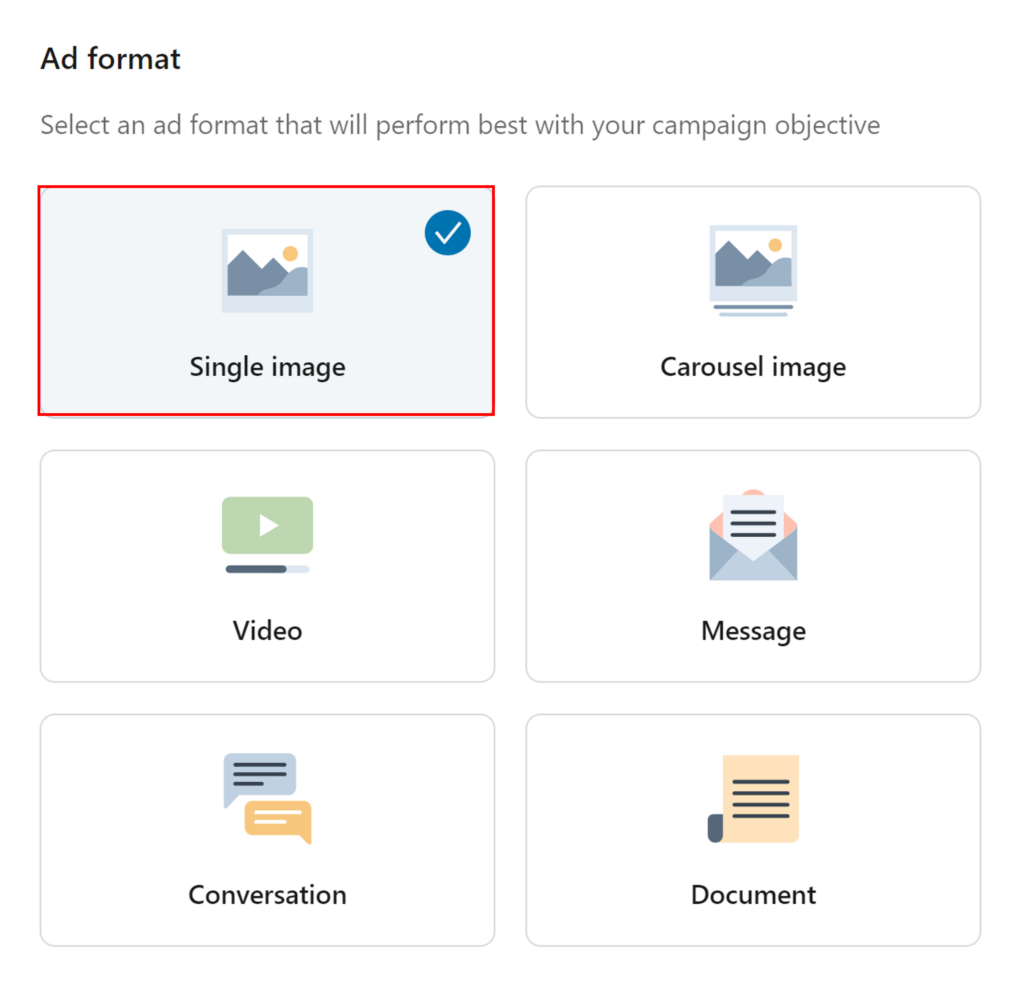
5. Set Your Budget and Schedule: Decide on a daily or total budget for your campaign. Set the start and end dates for your ad campaign. Choose a bidding strategy such as cost per click (CPC) or cost per impression (CPM).
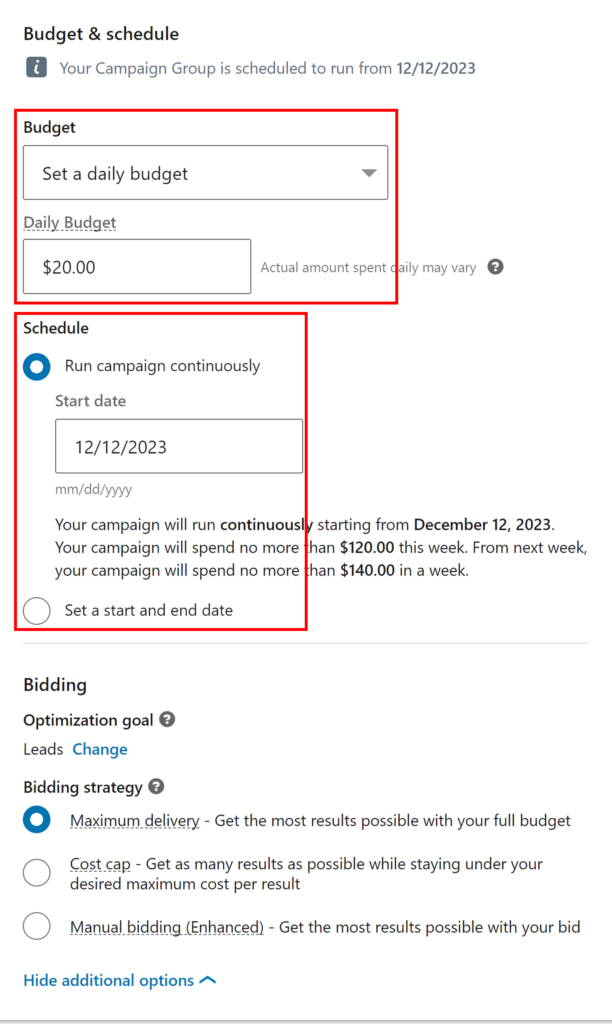
6. Create Your Ad: Click on ‘Create New Ad’. Upload your ad image. Ensure it meets LinkedIn’s image size and quality requirements. Write a compelling headline and description for your ad and add a clear call-to-action (CTA).
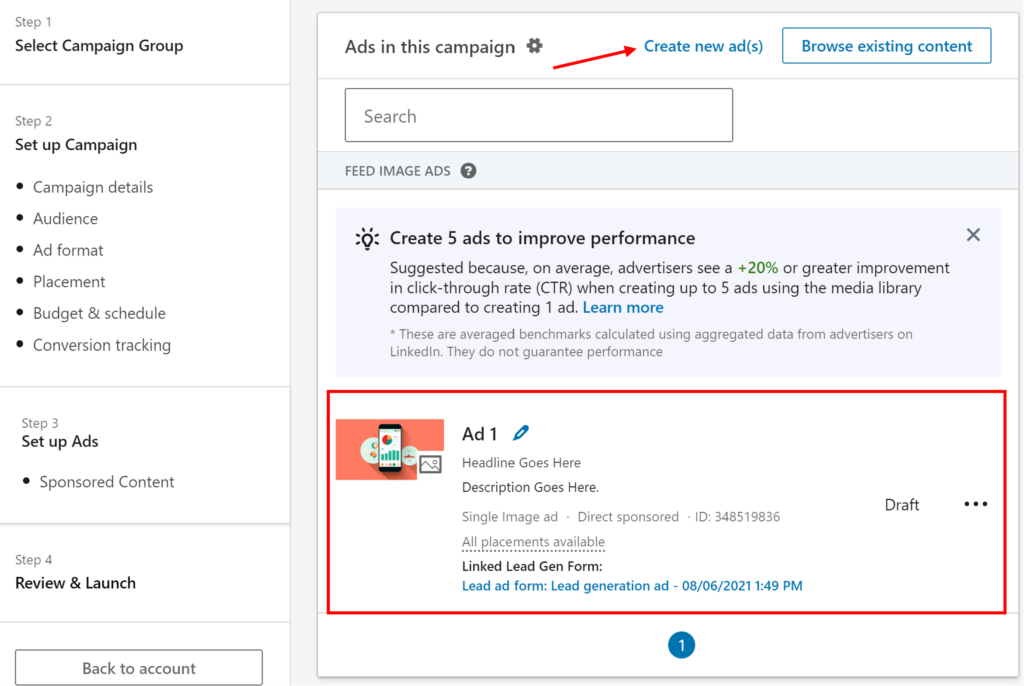
7. Enter Payment Information: Make sure payment details are set up on your account and are current.
8. Double Check and Launch: Review all the details. Once you’re satisfied, launch your ad campaign.
9. Monitor and Optimize: Monitor your campaign effortlessly with Amplytics or regularly check the performance of your ad through LinkedIn’s Campaign Manager. Make necessary adjustments based on performance metrics.
Measuring the Success of Your Ad Campaign
At Amplytics, we believe in the power of data. As such, we know that understanding how to measure the success of your LinkedIn single image ad campaign is crucial. Let’s take a deeper dive into the KPIs you should be analyzing.
What is a Good CTR for LinkedIn Single Image Ads?
Click-Through Rate (CTR) is a vital metric in assessing the performance of online advertising campaigns, including LinkedIn Single Image Ads. It represents the ratio of users who click on an ad to the number of total users who view the ad (impressions). Understanding what constitutes a good CTR for LinkedIn single image ads is crucial for marketers to evaluate the success of their campaigns and make data-driven decisions.
The average CTR for LinkedIn ads varies, and it can be influenced by several factors including the industry, target audience, ad relevance, and the overall quality of the ad. The global average click-through-rate (CTR) for sponsored content is between 0.44% – 0.65%. CTR for single image ads on LinkedIn is 0.56%, placing it well on the spectrum and making these campaigns worth your time and effort.
Many factors can affect CTR, including:
- Audience Relevance: The more relevant your ad is to your target audience, the higher the likelihood of them clicking on it. This is why precise targeting and understanding your audience’s needs and interests are crucial.
- Ad Quality: The visual appeal and clarity of your message play a significant role in attracting clicks. High-quality, relevant images and clear, concise messaging are key.
- Ad Placement: LinkedIn offers different ad placement options. The placement of your ad can affect its visibility and, consequently, its CTR.
- Industry Standards: Different industries experience different average CTRs. It’s helpful to research the average CTR for your specific industry on LinkedIn to set a realistic benchmark.
Optimize targeting and content to improve CTR. Conduct A/B testing on different elements of your ad, such as images, headlines, and call-to-action (CTA) phrases to see what resonates best with your audience.
Go Beyond Click-Through Rate
There are several other key metrics that are crucial to monitor to assess the overall performance and effectiveness of your LinkedIn single image ad campaign. These metrics provide deeper insights into how your audience is interacting with your ads and the ultimate impact on your business goals. Here are additional metrics to consider:
- Conversion Rate: This measures the percentage of users who clicked on your ad and then completed a desired action, such as filling out a form, signing up for a newsletter, or making a purchase. It’s a critical indicator of how effectively your ad is driving your specific campaign objectives.
- Impressions: This metric indicates the number of times your ad was displayed on LinkedIn. Tracking impressions helps you understand the reach of your ad and is especially useful when analyzed in conjunction with CTR to gauge overall campaign exposure and effectiveness.
- Engagement Rate: This encompasses the total number of interactions with your ad, including clicks, likes, shares, and comments. A high engagement rate often indicates that your content is resonating well with your audience.
- Cost Per Click (CPC): CPC measures how much you pay, on average, for each click on your ad. This metric is important for managing your ad budget and understanding the cost-effectiveness of your campaign.
- Cost Per Impression (CPM): This metric reflects the cost of a thousand impressions of your ad. It’s particularly relevant for brand awareness campaigns where the goal is to maximize visibility.
- Quality of Leads: For campaigns focused on lead generation, the quality of leads generated is a crucial metric. It involves assessing how well the leads align with your target audience and how likely they are to convert into customers.
- Return on Ad Spend (ROAS): This is a measure of the revenue generated for every dollar spent on your advertising campaign. A high ROAS indicates a profitable campaign.
- Bounce Rate: If your ad directs users to your website, the bounce rate measures the percentage of visitors who leave your website after viewing only one page. A high bounce rate could indicate that your landing page is not effectively capturing the interest of your audience.
- View-Through Rate: This metric is useful if your ad’s objective is more about brand awareness. It measures the number of users who saw your ad but didn’t click on it immediately, yet later completed a desired action.
- Customer Lifetime Value (CLV): This measures the total revenue a business can reasonably expect from a single customer account. It helps in understanding the long-term value of customers acquired through LinkedIn ads.
Making the Most of Your LinkedIn Single Image Ad Campaign
Crafting a successful LinkedIn single image ad campaign requires attention to detail, creativity, and an understanding of your target audience. By following the guidelines and best practices outlined in this guide, you’ll be well on your way to creating impactful ads that resonate with professionals on LinkedIn.
Amplytics is a cutting-edge marketing software for campaign triage to help marketers quickly identify and explore campaigns that need the most attention. Amplytics also automatically monitors paid campaign metrics and sends convenient alerts when they rise above or fall below user-defined benchmarks. Triage and automated alerts when used in concert save marketers time and empower them to scale up their marketing efforts.
Partner with Amplytics to drive decisions with insight to help your company grow. Start your free trial today.


